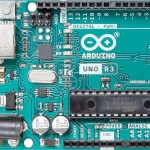Do you wish that you could manage your lab work effectively? It’s easier to perform your lab work when you have the basic equipment.
However, you need to know what types of lab supplies and equipment you have in your possession. Not everyone has the same set of facilities, so your setup may be different.
Be sure to use our checklist to organize everything you have in your possession. That way, you can use it effectively. This helps you determine whether you need to order new supplies and equipment.
Read on to learn more.
Lab Glassware
Lab glassware includes beakers, beaker covers, flasks, flasks with ground glass stoppers, condensers, graduated cylinders, measuring cylinders, Erlenmeyer flasks, volumetric flasks, and so much more that are all necessary pieces of lab glassware. It is also recommended that all glassware be labeled with a Sharpie to avoid confusion in the lab.
Proper disposal and safe storage of lab glassware are essential, and selecting the right type of glass material is important so that glassware is compatible with the materials it will be handling.
Safety Equipment
When working in a lab outside of a school setting, it is important to have the right safety laboratory equipment on hand. As such, the lab equipment checklist should include a variety of safety equipment, such as goggles, gloves, masks, and aprons. Other important safety equipment includes a fire extinguisher and a proper ventilation system or a gas leak detector.
It is also a good idea to invest in an emergency shower and eyewash station, in case of an accident. Having a first aid kit available is also wise; this should include bandages and ointments, as well as items such as antiseptics and anti-fungal powders.
Measurement and Analytical Instruments
Laboratories require a wide range of measurement and analytical instruments to carry out accurate and precise scientific research and analysis. These instruments play a crucial role in various fields such as chemistry, biology, physics, and environmental science, among others.
Spectrophotometers
One essential instrument found in most laboratories is a spectrophotometer. Spectrophotometers are used to measure the absorption or transmission of light by a substance at different wavelengths. They are vital for:
- analyzing the concentration of substances
- identifying compounds
- studying chemical reactions
Spectrophotometers are versatile instruments that enable researchers to gather valuable quantitative and qualitative data.
Microscopes
Another indispensable instrument is a microscope. Microscopes allow scientists to observe and study samples at a microscopic level. They are crucial for a wide range of applications, including:
- cell biology
- pathology
- material science
- forensics
Microscopes come in various forms, such as:
- optical microscopes
- electron microscopes
- confocal microscopes
Each of these offers different levels of magnification and resolution.
Analytical Balances
Laboratories also rely on analytical balances for the precise weighing of substances. Analytical balances are designed to measure small quantities with high accuracy. They are used in:
- chemical analysis
- formulation development
- pharmaceutical research
They are also used in other fields where precise measurements are necessary. Analytical balances often feature a draft shield. It is used to protect the sample from air currents and external influences that could affect the measurement.
In addition to these instruments, laboratories require a wide range of tools for measuring physical quantities. This includes:
- pH meters for acidity or alkalinity
- conductivity meters for electrical conductivity
- thermometers for temperature measurement
- pipettes for accurate liquid handling
These tools enable scientists to carry out experiments with precision and consistency.
Laboratory Consumables
Laboratory consumables are essential components that are used in various:
- scientific experiments
- research
- analysis
These consumables are often disposable. They play a critical role in maintaining the integrity and safety of laboratory work.
Laboratory consumables also encompass a range of filtration devices, such as:
- filter papers
- membranes
- syringe filters
Filtration is a common technique used in laboratories to separate solids from liquids or to remove impurities. These consumables ensure that the filtrate is free from contaminants. Thus, allowing researchers to obtain accurate and reliable results.
In addition, laboratory consumables include various types of lab gloves, such as nitrile or latex gloves. These of which are essential for maintaining a sterile and safe working environment. Gloves protect both the experimenter and the samples from cross-contamination and chemical exposure.
Chemicals
Laboratories rely on a wide range of chemicals that are considered must-haves as they are essential for performing specific:
- tests
- reactions
- sample preparations
One crucial category of laboratory must-have chemicals is acids and bases. Acids, such as hydrochloric acid and sulfuric acid, are used for:
- pH adjustments
- sample digestion
- catalysts in certain reactions
Bases, such as sodium hydroxide and ammonium hydroxide, are employed for:
- neutralization
- titrations
- pH control
These chemicals, adhering to GMP chemistry standards, are fundamental for a range of analytical, biochemical, and synthetic procedures.
Lab Furniture and Storage
One crucial piece of lab furniture is laboratory benches or workstations. These provide a dedicated and stable surface for:
- conducting experiments
- preparing samples
- performing various laboratory tasks
Lab benches are typically made of chemical-resistant materials such as stainless steel or phenolic resin. These can withstand spills and chemical exposure. They often have integrated sinks, gas, and electrical outlets.
Benches also come with adjustable features to accommodate different experimental setups. In addition to benches, laboratories require storage cabinets and shelves for organizing and storing:
- equipment
- chemicals
- supplies
Chemical storage cabinets are designed to safely store hazardous chemicals, protecting both laboratory personnel and the environment. They are usually constructed of fire-resistant materials. These cabinets feature proper ventilation systems to prevent the buildup of potentially dangerous vapors.
Shelves and cabinets for general storage help keep the laboratory tidy. It helps ensure easy access to frequently used items.
Invest In Your Lab Supplies Following this Checklist
In conclusion, investing in high-quality laboratory supplies is essential for ensuring the success and safety of your scientific endeavors. By following a comprehensive checklist, you can equip your laboratory with the necessary tools to carry out accurate experiments, maintain a well-organized workspace, and protect both your research and personnel.
By prioritizing the quality and functionality of your lab supplies, you can enhance the reliability of your results, improve efficiency, and promote a culture of safety in your laboratory. So, take the time to carefully assess your needs, select reputable suppliers, and make the necessary investments to equip your lab with the supplies it requires.
Visit our blog for more helpful articles.

















